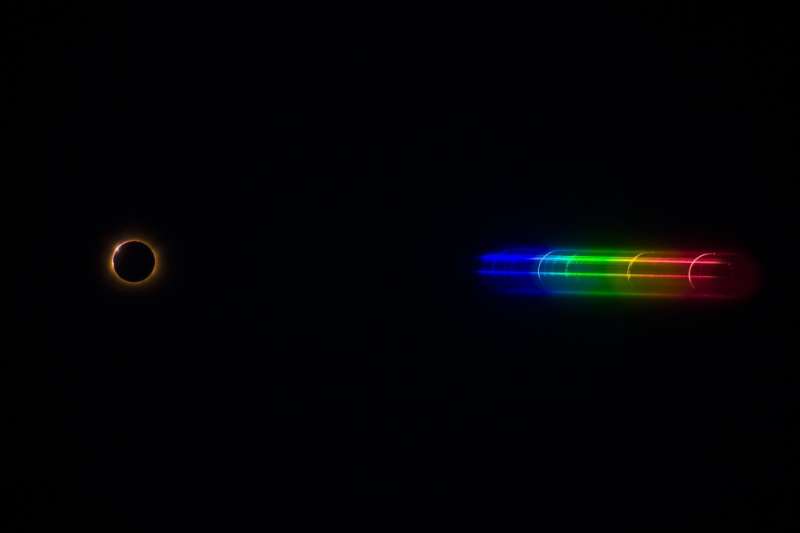Credit & Copyright: Constantine Emmanouilidi
Explanation:
In a flash, the
visible spectrum of the Sun changed from
absorption to emission on November 3rd,
during the brief total phase of a solar eclipse.
That
fleeting moment is captured by telephoto lens and
diffraction grating in this well-timed image
from clearing skies over Gabon in equatorial Africa.
With overwhelming light from the Sun's disk
blocked by the Moon, the normally dominant
absorption spectrum of the solar photosphere is hidden.
What remains, spread by the
diffraction grating into
the spectrum of colors to the right of the eclipsed Sun,
are individual eclipse images at each wavelength of light
emitted by atoms along the thin arc of
the solar chromosphere.
The brightest images, or strongest
chromospheric emission lines,
are due to Hydrogen atoms that produce the red hydrogen
alpha emission at the far right and blue hydrogen beta
emission to the left.
In between, the bright yellow emission image is caused by atoms of Helium,
an element only first discovered in the
flash spectrum of the Sun.
1999 2000 2001 2002 2003 2004 2005 2006 2007 2008 2009 2010 2011 2012 2013 2014 2015 2016 2017 2018 2019 2020 2021 2022 2023 2024 2025 |
Yanvar' Fevral' Mart Aprel' Mai Iyun' Iyul' Avgust Sentyabr' Oktyabr' Noyabr' Dekabr' |
NASA Web Site Statements, Warnings, and Disclaimers
NASA Official: Jay Norris. Specific rights apply.
A service of: LHEA at NASA / GSFC
& Michigan Tech. U.
|
Publikacii s klyuchevymi slovami:
spectrum - solar eclipse - Solnechnoe zatmenie - Spektr
Publikacii so slovami: spectrum - solar eclipse - Solnechnoe zatmenie - Spektr | |
Sm. takzhe:
Vse publikacii na tu zhe temu >> | |
